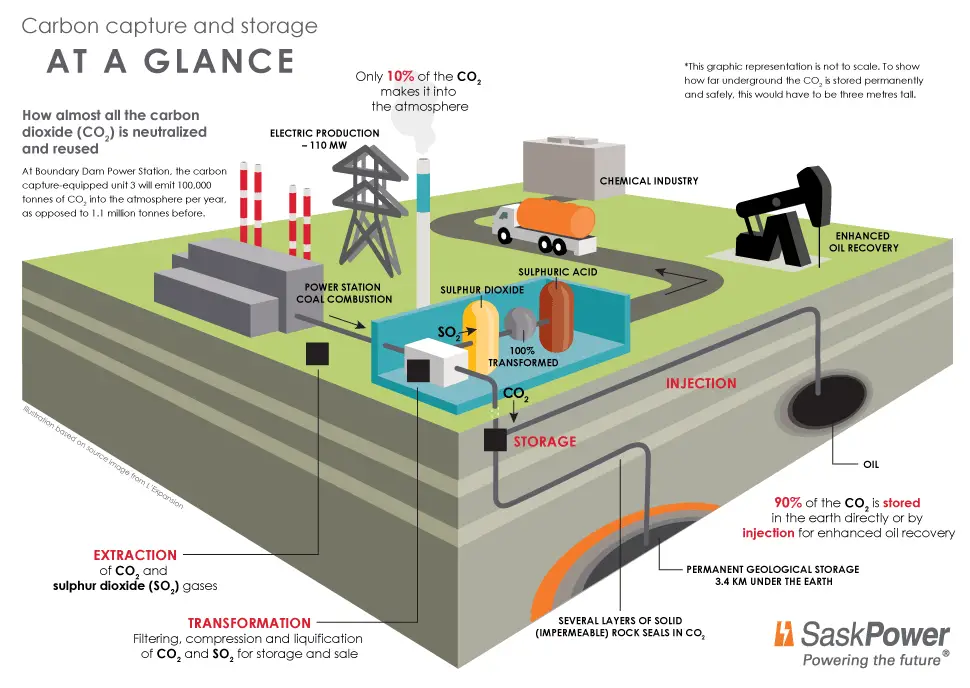
21st October 2014 World's first carbon-capture coal power plant The world’s first commercial-scale carbon capture and storage (CCS) process on a coal-fired power plant has been officially opened at Canada's Boundary Dam Power Station. This $1.4 billion project will cut CO2 emissions from the plant by 90% and sulphur dioxide emissions by 100%.
Electric utility company SaskPower’s new process involves retrofitting an old 110-megawatt (MW) coal-fired plant (that was first commissioned in 1959), adding solvent-based processors to strip away carbon dioxide, and then piping the CO2 to a nearby oil field. When fully optimised, it will capture up to a million tonnes of carbon dioxide annually, the equivalent of taking 250,000 cars off the road. The power unit equipped with CCS technology will continue to use coal to power approximately 100,000 homes and businesses in Saskatchewan, near the Canada-U.S. border. The captured CO2 will be used for enhanced oil recovery, with the remainder stored safely and permanently deep underground and continuously monitored. The Canadian federal government paid $240 million towards the project. The launch was attended by more than 250 people from over 20 countries representing governments, industries and media. Attendees at the event toured the facility and learned how they can access SaskPower’s expertise and knowledge to develop their own CCS initiatives. “This project is important because it is applicable to 95% of the world’s coal plants,” said Bill Boyd, Saskatchewan Minister of the Economy. “As nations develop emission regulations, they will come to us to see how we continue to provide affordable coal power to customers, but in an environmentally sustainable way.” This follows news last month of a similar project being developed in Jacksonville, USA. The Environmental Protection Agency (EPA) approved permits allowing the FutureGen Industrial Alliance to capture and store CO2 deep underground – the first project of its kind in the U.S. “The opening of this new SaskPower plant reinforces the great innovation and development that can take place if you have strong investment and partnerships from the government and industry,” said U.S. Senator Heidi Heitkamp (D-ND). “From my more than a decade working at Dakota Gasification in North Dakota, and from visiting the construction of the SaskPower facility just over a year ago, I understand just how important it is that we look to the future in how we harness our energy. Coal is a key resource in both Canada and the U.S., and through the development of clean coal technology, we can create North American independence and energy security, while also reducing emissions. We need to develop more clean coal plants to make that possible, and in the U.S., we can learn from the steps Canada has taken to find a realistic path forward for coal.” The economics of CCS are still a major issue, however. At present, SaskPower's project is expensive and depends on having a nearby source of coal alongside an additional revenue stream from the enhanced oil recovery. Environmentalists have also continued to express concerns. “At the end of the day, many people are going to wonder why SaskPower is investing $1.4-billion in 'clean coal' technology instead of wind, solar or geothermal energy,” said Victor Lau, Saskatchewan Greens Leader. “Our party will be monitoring future developments of this project very carefully.”
Comments »
|







